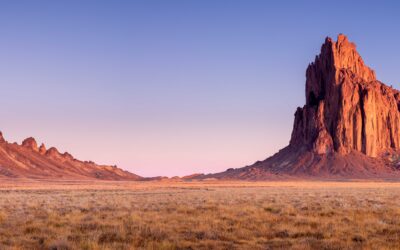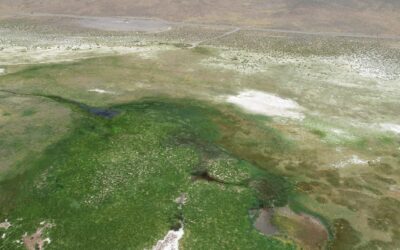Reno, NV (Weds, Nov. 8, 2017): The Desert Research Institute (DRI) is proud to announce that Science Alive, the Institute’s K-12 outreach program and home of the Green Box initiative, has been selected for inclusion on the Nevada STEM Advisory Council’s new list of recommended STEM programs.
DRI Science Alive provides inquiry-based STEM (science, technology, engineering, and mathematics) curriculum, classroom supplies, and professional trainings to any teacher in Nevada that is interested, free of charge.
The DRI Science Alive program is the only Nevada System of Higher Education (NSHE) program and one of only two non-profit programs (out of 16 total) to earn this commendation.
“This endorsement corroborates DRI’s reputation as a STEM education leader in our state,” said Dr. Kristen Averyt, President of DRI. “We are truly honored to be included in this group.”
The Governor’s Office of Science, Innovation and Technology (OSIT) and the Nevada STEM Advisory Council (Council) announced 16 STEM programs approved for inclusion on the Council’s list of recommended STEM programs in October 2017. Each program’s application was thoroughly evaluated by a group of trained, Nevada-based reviewers according to a Nevada-specific rubric and questions.
“Educators across the State have a mission to provide the best education possible to their students. This list will help teachers, principals, and school districts select the best STEM resources available to meet the needs of their students,” said Kelly Barber, Co-Chair of the Nevada STEM Advisory Council and STEM Coordinator for the Washoe County School District.
In its State Strategic Plan for STEM, the Nevada STEM Advisory Council established priorities and goals to ensure that all of Nevada’s students have the opportunity to gain a high-quality STEM education. The Strategic Plan recommends that Nevada identify and fund evidence-based, high-quality formal and informal STEM practices and programs. In order to determine which STEM programs meet this evidence-based, high-quality standard, OSIT and the STEM Advisory Council partnered with Change the Equation and WestEd to develop review criteria and vet STEM programs for inclusion on a list of recommended programs for funding. Programs that met the eligibility criteria for the national STEMworks database were eligible for consideration to be included on Nevada’s list.
“I am very impressed with the programs that made the Council’s list. This list of recommended STEM pro-grams will be a great resource for both the State and for our schools to guide funding decisions toward pro-grams that have demonstrated rigor in content, evaluation, replicability, and sustainability,” said Brian Mitchell, Director of OSIT. “I want to thank the evaluators from across Nevada for lending their time and expertise to review the applications.”
Inclusion on STEM Advisory Council’s list does not guarantee funding. In Nevada, schools and school districts make curricular, professional development, and other funding decisions. However, school districts in Nevada may apply for future STEM education funding from the Nevada Department of Education or from OSIT’s K-5 STEM Grant to fund STEM programs on the Nevada STEM Advisory Council’s list. Additionally, the Nevada Legislature, local school districts, and private philanthropy in Nevada may also use the Nevada STEM Advisory Council’s list to guide their own STEM education investments. The list is meant as a resource to school leadership; the list is not exhaustive of all good STEM programs and use of the list is not mandatory.
“Our mission with Science Alive is to extend the amazing science and innovation that happens every day at DRI into Nevada’s classrooms,” said Amelia Gulling, DRI Science Alive program administrator. “This incredible honor will not only allow DRI faculty and staff to enhance their collaborations with local teachers, schools and school districts, but also expand our fundraising efforts and community partnerships.”
Since its inception in 2000, DRI’s Science Alive program has reached over 60,000 students, in more than 400 schools, across every county in Nevada.
Learn more about DRI’s Science Alive program at – https://sciencealive.dri.edu/
Read the official OSIT announcement here – http://osit.nv.gov/uploadedFiles/ositnvgov/Content/News/STEMworks%20Announcement%20Press%20Release%20Final(2).pdf
The Desert Research Institute (DRI) is a recognized world leader in investigating the effects of natural and human-induced environmental change and advancing technologies aimed at assessing a changing planet. For more than 50 years DRI research faculty, students, and staff have applied scientific understanding to support the effective management of natural resources while meeting Nevada’s needs for economic diversification and science-based educational opportunities. With campuses in Reno and Las Vegas, DRI serves as the non-profit environmental research arm of the Nevada System of Higher Education. For more information, please visit www.dri.edu.
The Nevada STEM Advisory Council: The mission of the Nevada STEM Advisory Council is to increase student interest and achievement in the fields of science, engineering, technology, and mathematics, leading students to rewarding careers in the New Nevada economy. The STEM Advisory Council is charged with identifying and awarding recognition to students and schools throughout Nevada that excel in STEM.
The Governor’s Office of Science, Innovation and Technology (OSIT): The mission of OSIT is to coordinate, support, and align efforts by K-12 and higher education, workforce development and employers to improve science, technology, engineering, and mathematics (STEM) education and STEM workforce development so that Nevada’s workforce can meet the demands of its growing economy.


